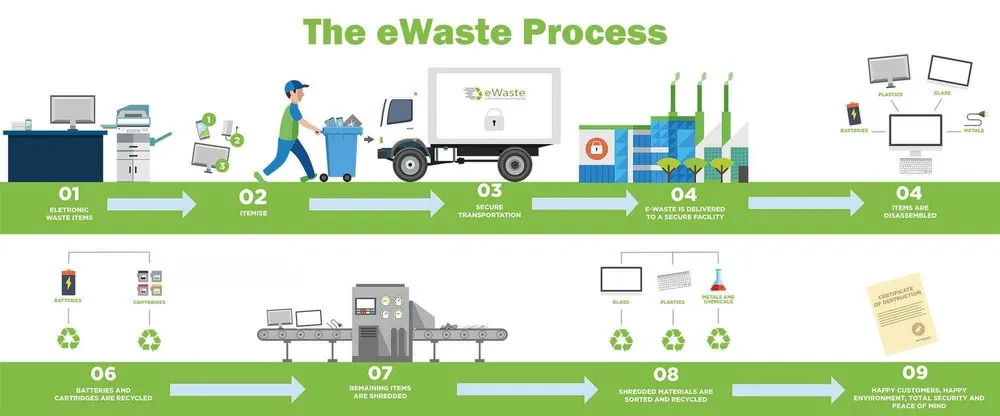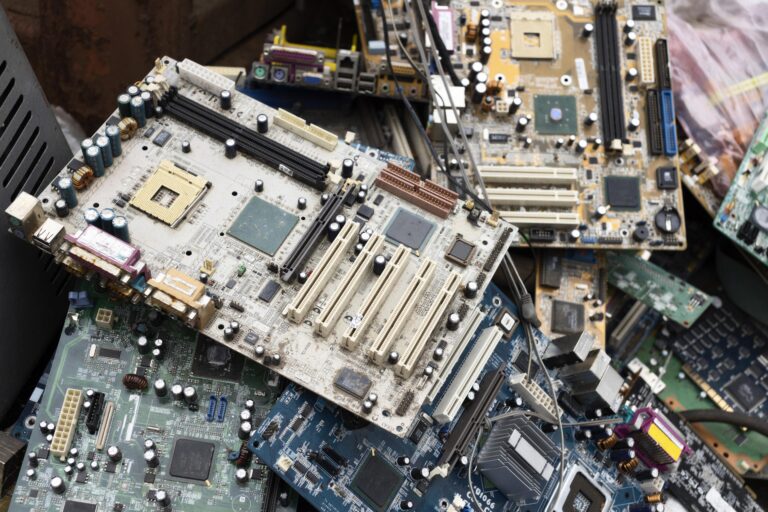E-waste Management

An e-waste management initiative refers to a systematic approach or program designed to address the growing problem of electronic waste (e-waste). E-waste includes discarded electronic devices and equipment, such as computers, smartphones, tablets, televisions, refrigerators, and other electrical or electronic items. These items contain hazardous materials and valuable resources, making their proper disposal and recycling crucial for environmental protection and resource conservation.
Here are key components and strategies typically associated with e-waste management initiatives:
Collection Centers: Establish collection centers or drop-off points where individuals and businesses can responsibly dispose of their old electronics. These centers should be easily accessible and well-publicized.
Awareness and Education: Conduct awareness campaigns to educate the public about the importance of recycling e-waste and the potential environmental and health hazards associated with improper disposal.
Legislation and Regulation: Enact and enforce laws and regulations that govern the disposal and recycling of e-waste. These regulations might include product stewardship programs, extended producer responsibility (EPR) laws, and restrictions on hazardous materials in electronic products.
Producer Responsibility: Implement producer responsibility programs, requiring manufacturers to take back and properly recycle their products at the end of their life cycle. This shifts some of the responsibility and costs of recycling from taxpayers to producers.
Safe Disposal: Ensure that e-waste is disposed of safely and does not end up in landfills or illegal dumping sites. Hazardous materials, like lead, mercury, and cadmium, must be handled and disposed of with care to prevent environmental contamination.
Recycling Facilities: Develop and support e-waste recycling facilities where electronic devices can be dismantled and components can be safely extracted for reuse or recycling. Valuable materials such as metals and plastics can be recovered through these processes.
Data Security: Prioritize data security and privacy during the disposal process. Ensure that personal and sensitive data is securely wiped from electronic devices before recycling or refurbishing.
Incentives: Offer incentives for recycling, such as discounts on new electronics when old ones are returned for recycling.
Research and Innovation: Promote research and development in the recycling and recovery of materials from e-waste. Explore new technologies and methods to improve the efficiency and sustainability of e-waste management.
International Cooperation: Collaborate with other countries to address the global nature of the e-waste problem. Implement international agreements and standards for e-waste management and recycling.
Circular Economy: Promote a circular economy approach, where products are designed with recycling and resource recovery in mind from the beginning. This can reduce the generation of e-waste in the first place.
Job Creation: Recognize that e-waste management initiatives can create jobs in recycling, refurbishing, and related industries, contributing to economic growth.
E-waste management is not only an environmental issue but also a social and economic one. By properly managing e-waste, we can reduce the negative impact on the environment, recover valuable resources, protect human health, and create economic opportunities. Collaborative efforts among governments, industries, and consumers are essential to the success of such initiatives.
